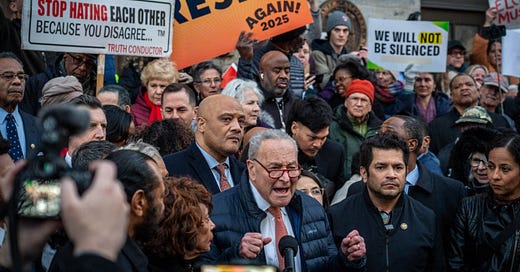
Intro to 20th Anniversary edition E-book of Geography of Nowhere – sample
Introduction to 20th Anniversary Edition – Partial
Of The Geography of Nowhere
James Howard Kunstler
It was actually forty years ago when I first vividly glimpsed the beginning of the end of the suburban idyll, a.k.a. the American Dream, the American Way of Life, the World’s Highest Standard of Living, et cetera — the ghastly spectacle of construction and destruction that converted a lovely, verdant, beckoning New World continent into a wilderness of free parking. A lot happened since then and I want to bring you that news. But first a step back.
In the fall of 1973, I was a young newspaper reporter in New York’s capital, Albany, when the OPEC oil embargo hit. Our office was in a brand-new modernist concrete and glass box on a new six-lane boulevard of new franchise commerce in the outer asteroid belt of the Albany suburbs, the epitome of every bad choice our society was making. In the event, the price of oil doubled virtually overnight, supplies become spotty, long lines formed at the gasoline stations, tempers flared, business suffered and slumped, the government freaked out, and you got a nice taste of how an overly complex economy implodes in complex ways. For a month or so, the wheels really came off our drive-in utopia. I became convinced that the suburban living arrangement was doomed.
As it happened, though, the US economy limped through the rest of the 1970s (stagflation! 20 percent interest rates! factory closings!) and “recovered” in the 1980s when the last great discoveries of non-OPEC conventional oil came on-line to save the day: Prudhoe Bay in Alaska, the North Sea, Siberia, Mexico. This gave suburbia a reprieve that lasted about 25 years in a final, glorious, hypertrophic burst which finally came to grief around 2007 with the popping of the so-called housing bubble and the ensuing complications in world finance.
The Geography of Nowhere came out in 1993, twenty years after my epiphany on the gas lines. By then, I had published eight novels. Many of them — The Halloween Ball, An Embarrassment of Riches, Blood Solstice — contained themes and riffs on the horror of suburbia, but not what might be called a comprehensive view of it. Needing a change of focus (after failing to become an overnight sensation writing novels), I returned to journalism in the late 1980s and a series I did for The New York Times Sunday Magazine on various angles of the suburban predicament led to a book contract on, shall we say, a grand unifying theory of it all. It was initially titled Scary Places, but the poobahs at Simon and Schuster made me change it because they thought book buyers would mistake it for a horror story. The original title had derived from one of my favorite epigrams in the manuscript: “We built a nation of scary places and became a nation of scary people.” It was the soundest line of political analysis I ever came up with, and is more true today than ever.
Anyway, it was perfectly obvious after the oil crises of the 1970s, that sooner or later America would seriously and probably permanently come to grief over oil. I made continuous reference to it in The Geography of Nowhere. However, the general public didn’t have a lexicon or a frame of reference to comprehend the finer points of the problem which eventually became known as “peak oil.” Then in the late 1990s, well after The Geography of Nowhere came out, a set of senior geologists started retiring from the ranks of the major oil companies — figures such as Colin Campbell, Kenneth Deffeyes, and Walter Youngquist — and, having secured their pensions, began to publish their dark-and-secret thoughts about the destiny of the oil industry and, indeed, of the complex industrial civilizations that depended on it. Their message was that the human race faced a tribulation not very far into the future. Of course, it confirmed my own rather dark intimations. Their work was published in obscure scientific journals and monographs, but it happened to coincide with the bourgeoning of the Internet, and pretty soon the news was getting out. The public finally had that frame of reference and began to grasp the implications.
I went on to write two more books about suburbia, urban design, and cities (Home From Nowhere; The City in Mind). Through the 1990s and early 2000s, I was associated with the New Urbanist movement, a sterling bunch of architects, builders, and public servants who deeply wished to reform the way things got built in this country. They were concerned more with the civic and social failures of the suburban fiasco than the energy issue in those years, but they were wonderfully effective in presenting a counter-vision to the evolving clusterfuck of American life, and they had a considerable impact on the scene over the period.
It became more and more obvious, though, that the energy issues would eventually overtake all other plot-lines of the story in changing the way we do things in this country and in 2005 I published a book, The Long Emergency, describing the serious trouble ahead. Two years later, the housing bubble began its long, agonizing bust with the implosion of the investment house Bear Stearns. I had predicted the bust in The Long Emergency — frankly, anyone with half a brain could see it coming — but also laid out the connection between the housing bubble and the gross misconduct in banking that it was connected with, especially the bond and derivative frauds, and behind that was an even bigger story.
Putting It Together
In recent years, I have discovered many other ways of looking at the connections between our energy predicament, our financial quandary, our economic muddle, and way we have arranged things on the landscape. These allowed me to develop a comprehensive vision about where these problems are leading us — to a World Made By Hand, as I titled the first of a cycle of novels begun in 2008 about the post-economic collapse American future. Two of these ways of seeing the situation can be stated succinctly and help frame where we find ourselves in terms that anyone can understand.
The first is that the immersive ugliness of the built environment in the USA is entropy made visible. It indicates not simple carelessness but a vivid drive toward destruction, decay and death: the stage-set of a literal “death trip,” of a society determined to commit suicide. Far from being a mere matter of aesthetics, suburbia represents a compound economic catastrophe, ecological debacle, political nightmare, and spiritual crisis — for a nation of people conditioned to spend their lives in places not worth caring about.
Click to buy Kindle $3.99 Click for Nook











